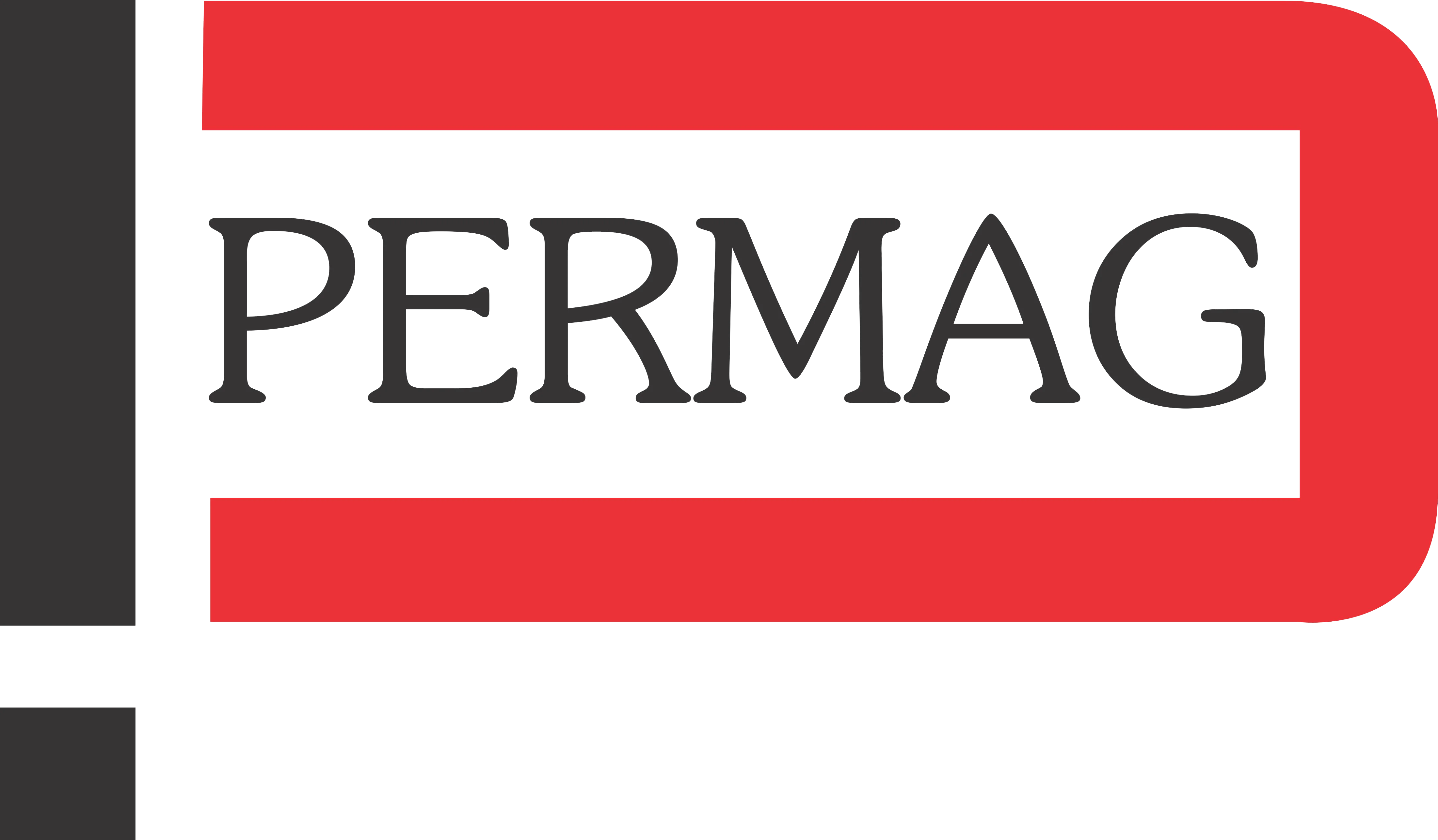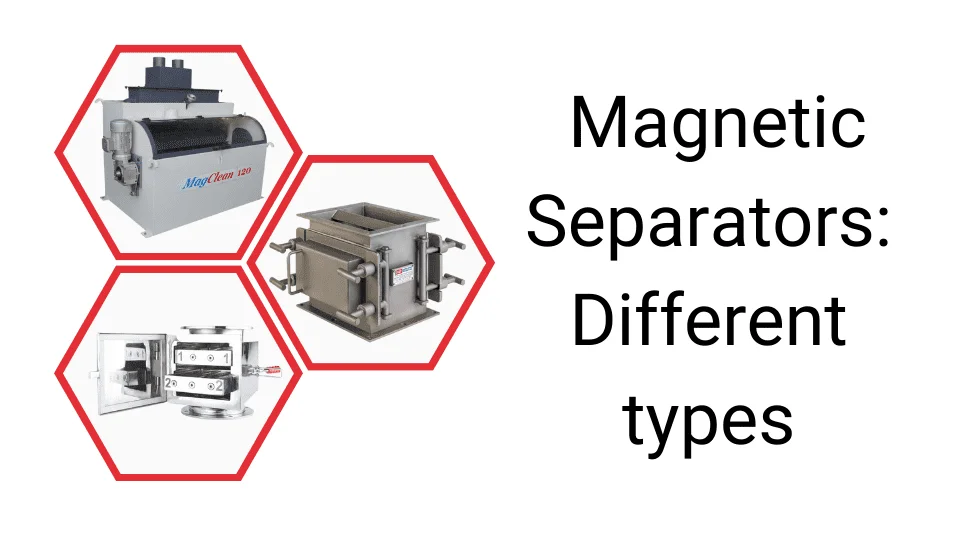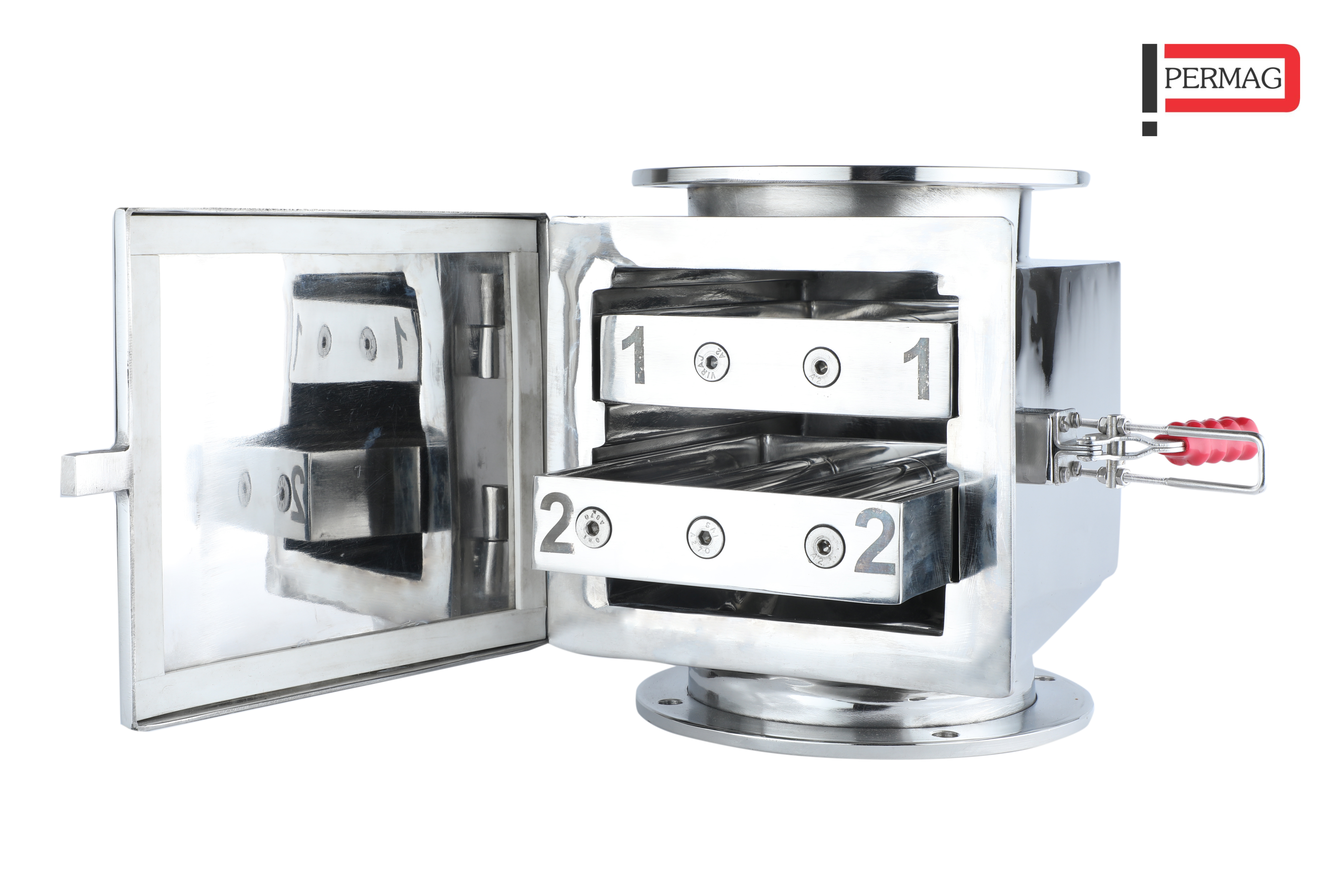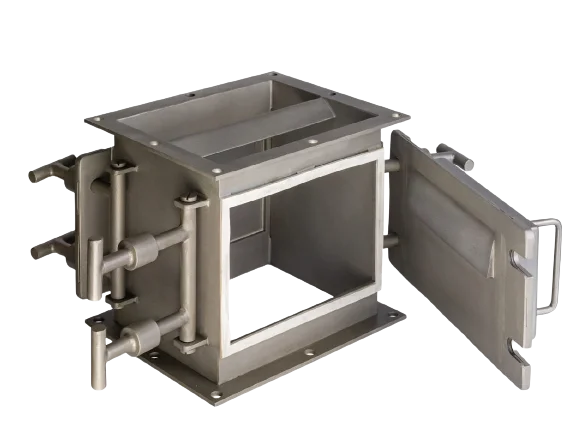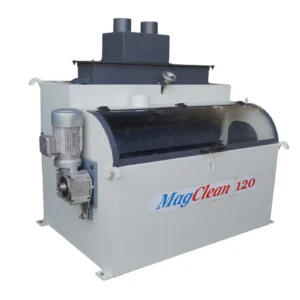There are many types of magnetic separator available in the market today. But which of these is suitable for your application? That question can be answered upon closer inspection of the separators.
Separators can be classified according to various parameters:
- Structure of the separator
- Type of material input
- Magnetic field strength
- Type of magnetic field
According to the structure of the magnetic separator:
a. Drawer Type Magnetic grill – High power magnetic cartridges trays are kept in arrangments of two or more in a drawer type magnetic grill. They are staggered to maximise contact with the product. Beneficial for dry, free-flowing types of products.
b. Magnetic Separator Manufacturer (Plate Magnet separator) – The Magnetic Separator Manufacturer uses a plate magnet style circuit with two opposing Plate magnets. It has easy handling with its open throat design and faster cleaning enabling higher productivity. Also, it is ideal for sticky products that do not readily flow.
c. Rare Earth Roll Separator – Rare Earth Roll Separator is includes a unique inclined belt feeding the system to maximise performance. It includes a kevlar feed belt and a mounted vibratory feeder for a consistent feed rate. Also, it is useful for material which does not respond to usual measures of separation.
According to the type of material input:
a. Dry type magnetic separator – Here, the material stays dry during the operation. No water or any other medium is mixed with the input material.
b. Wet type magnetic separator – The input material must be mixed with water or any liquid to create a slurry. Then, the magnetic separation is carried out using this wet mixture.
According to magnetic field strength:
a. Low Power Separators – These operate in the range of 3000-6000 Gauss.
b. Medium Power Separators – These operate in the range of 6000 – 9000 Gauss.
c. High Power Separators – These operate in the 9000+ Gauss range.
However, it is important to note that there is no official classification according to the Gauss range.
According to the type of magnetic field:
a. Permanent magnet separator – This separator uses a permanent magnet such as a Neodymium Iron Boron magnet or a ferrite magnet to separate contaminants. This has lesser operational costs as it doesn’t require electricity to run.
b. Electromagnetic separator – This separator uses a solenoid. It charges the appropriate conductor to generate a magnetic field by passing electricity. This has more operational costs due to the usage of electricity.
So, these are the various types of separators based on various parameters for classification. Hope this article provided you with some valuable information.
Permag Products has been in the magnetic industry since its inception in 1985. The industry has consistently recognized it as a pioneer and problem solver. Also, we develop distinctive and customized solutions for leading players across sectors such as ITC, Hindustan Unilever, Pepsico, Ranbaxy, Abbott and many more.
